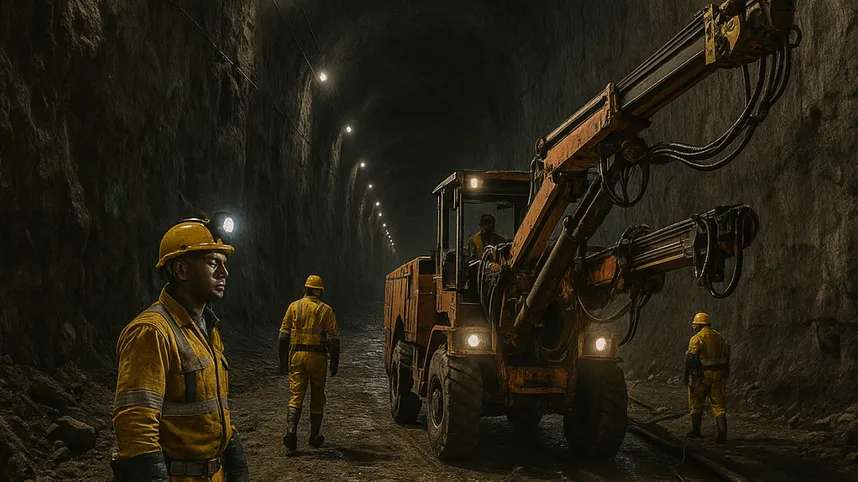Tharisa Commits US$547 Million to Underground Platinum Expansion

Tharisa invests US$547M to expand underground platinum mining in South Africa, boosting output and advancing hydrogen-era PGM production.
South Africa’s Tharisa plc has unveiled an ambitious US$547 million investment plan to transition part of its flagship Bushveld Complex operations from open-pit to underground mining over the next decade. The move marks a strategic evolution for the Johannesburg-based producer, positioning it to unlock deeper platinum group metal (PGM) and chrome ore bodies while extending the operational life of its mine by multiple generations. This long-term commitment underscores Tharisa’s confidence in the enduring strategic importance of PGMs, not only in traditional automotive applications but also in the rapidly growing hydrogen and clean energy industries.
The planned underground development will transform Tharisa’s current open-pit operation into a dual-shaft system designed to deliver continuous ore supply and higher-grade feed to the processing plant. The first shaft is scheduled to begin ore delivery in Q2 2026, while full-scale production is expected to ramp up gradually, reaching 200,000 ounces of PGMs annually and more than 2 million tonnes of chrome concentrate at steady-state output. For comparison, Tharisa’s 2025 guidance forecasts 140,000–160,000 ounces of PGMs and 1.65–1.8 million tonnes of chrome, meaning the underground expansion could lift output by over 30% once fully operational.
By going underground, Tharisa aims to enhance operational efficiency, reduce surface disturbance, and access high-grade mineralization zones located beneath the existing open pit. The Bushveld Complex, one of the world’s most mineral-rich geological formations, hosts some of the largest known reserves of platinum, palladium, rhodium, and associated base metals. This transition aligns with the company’s long-term goal of building a multi-generational mining platform capable of sustaining production for decades while maintaining environmental and social commitments.
Beyond South Africa, Tharisa is advancing its Karo Platinum Project in Zimbabwe, one of only two major new greenfield PGM developments globally (the other being Ivanhoe Mines’ Platreef project in South Africa). The combination of its underground expansion and regional diversification reflects Tharisa’s strategy to remain competitive in a changing global metals market. While electric vehicles have raised questions about the long-term demand for PGMs in catalytic converters, the metals are increasingly critical in hydrogen fuel cells, electrolysis systems, and other low-carbon technologies, ensuring sustained relevance in the global energy transition.
In a broader context, Tharisa’s US$547 million commitment signals enduring confidence in Africa’s PGM sector and its role in future clean technology supply chains. For South Africa, this project represents a boost to local mining investment, job creation, and value-added processing at a time when many operators are scaling back. If executed successfully, the transition could serve as a blueprint for modernizing mature PGM operations across the Bushveld and beyond, balancing economic viability with environmental responsibility in the era of decarbonization.
Mini-Glossary
- Platinum Group Metals (PGMs): A group of six metallic elements (including platinum, palladium, and rhodium) used in automotive catalysts, fuel cells, and industrial processes.
- Bushveld Complex: A vast geological formation in South Africa containing some of the world’s richest deposits of PGMs and chrome.
- Open-Pit Mining: A surface mining method involving the removal of overburden to access shallow ore deposits.
- Underground Mining: Extraction of deeper ore bodies through shafts and tunnels, often used for long-life, high-grade deposits.
- Greenfield Project: A new mining development built from scratch rather than expanding or reworking an existing operation.
- Fuel Cells: Devices that convert hydrogen and oxygen into electricity, using PGMs as catalysts for the electrochemical reaction.
